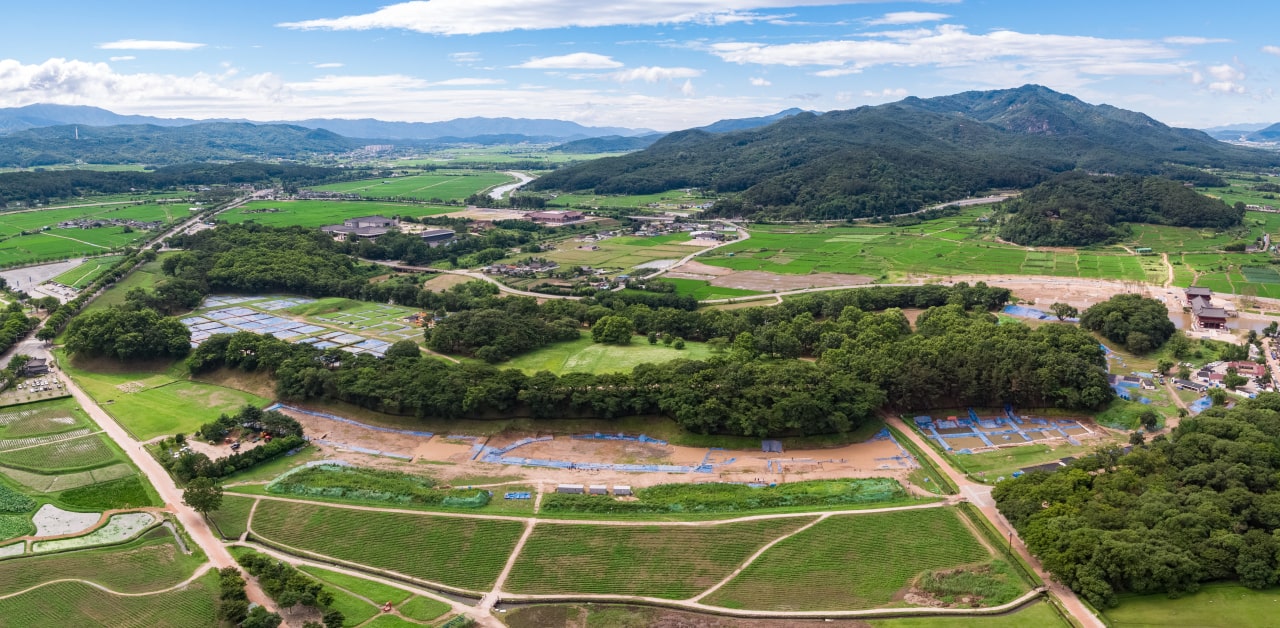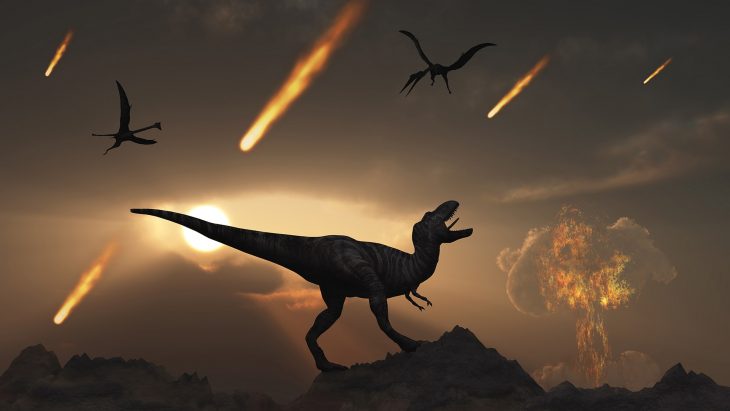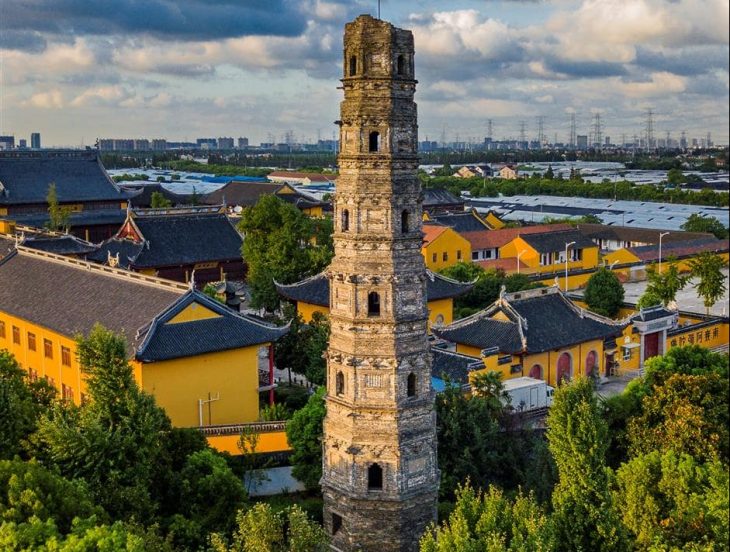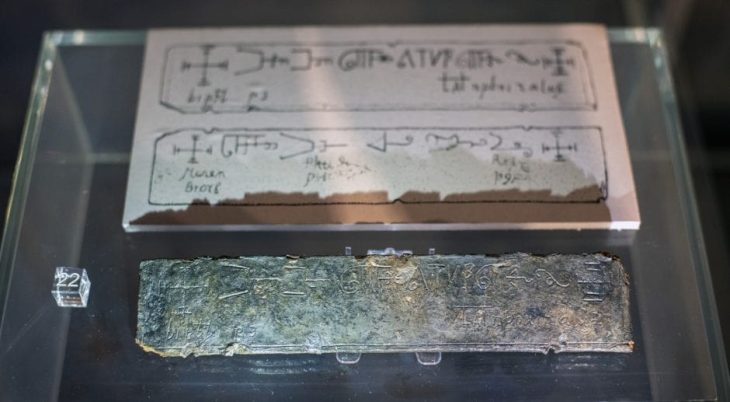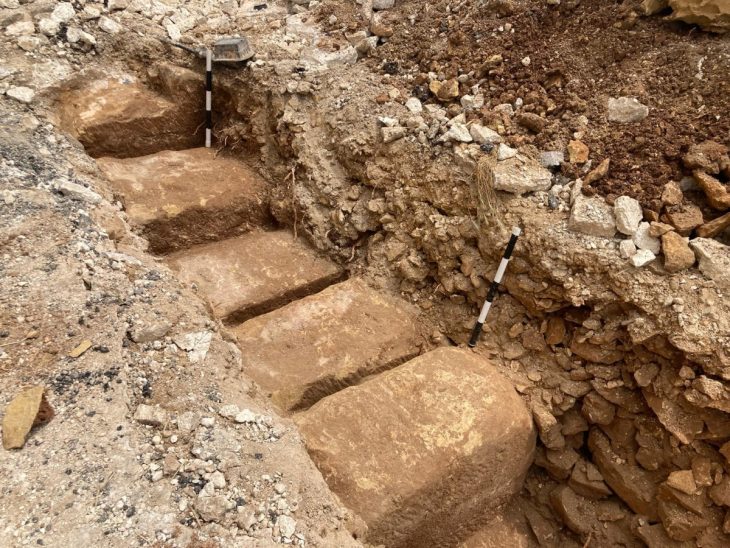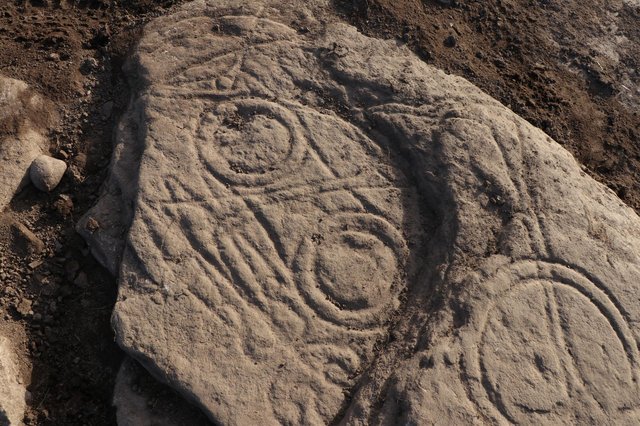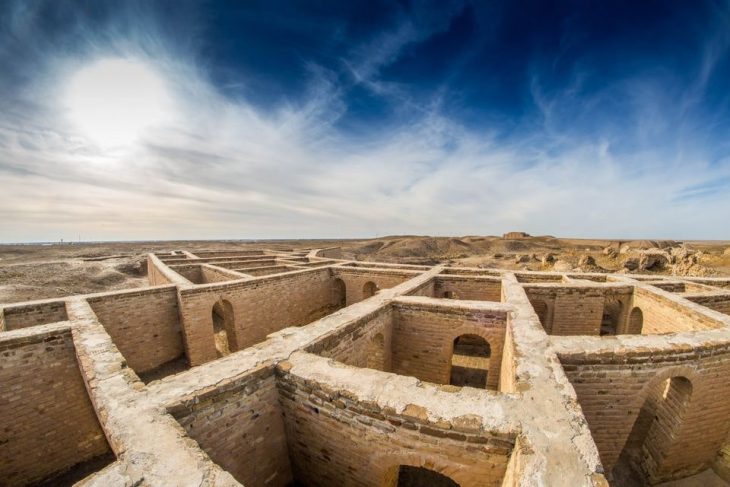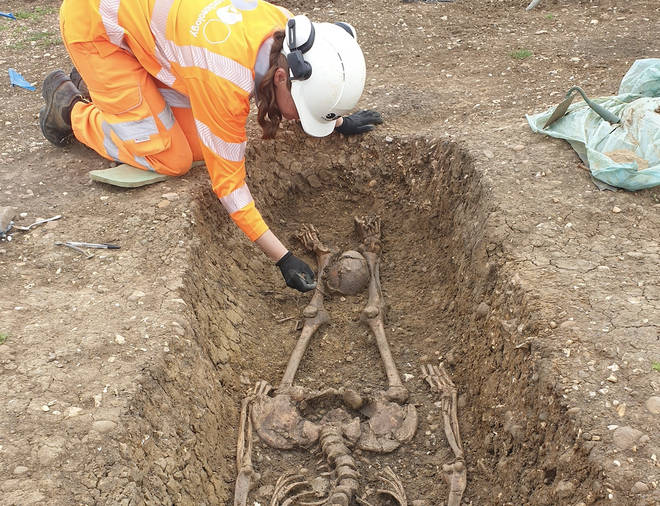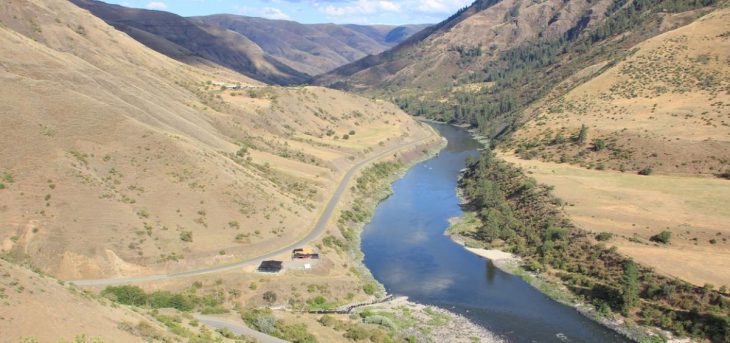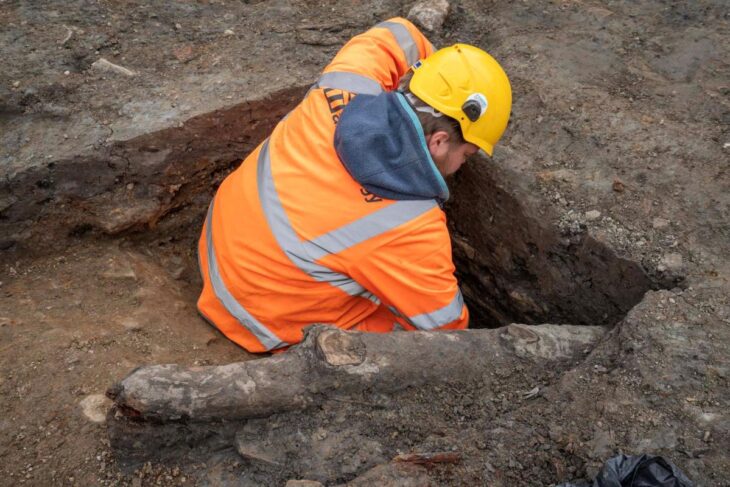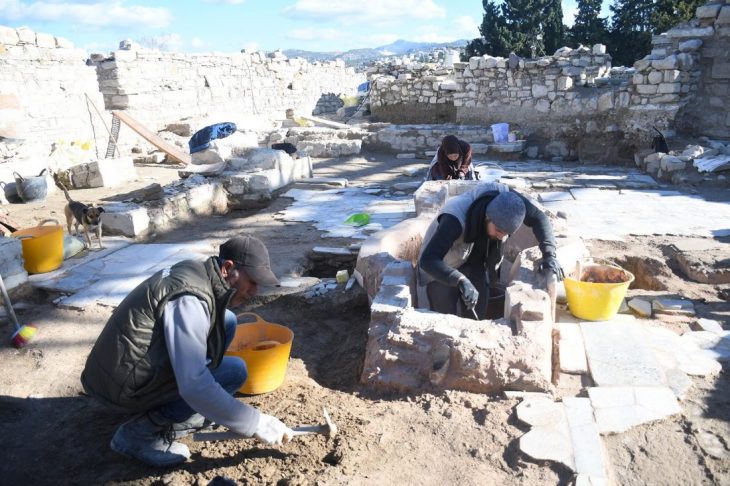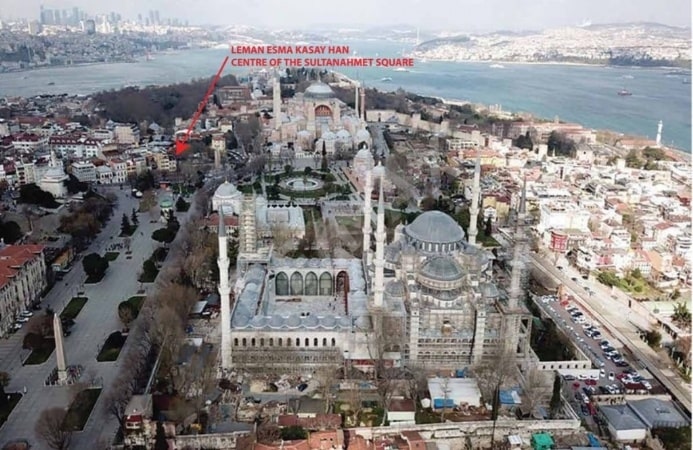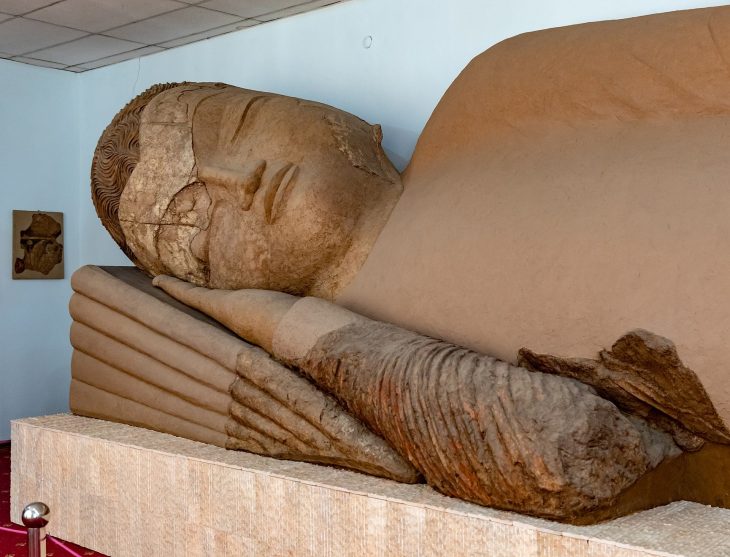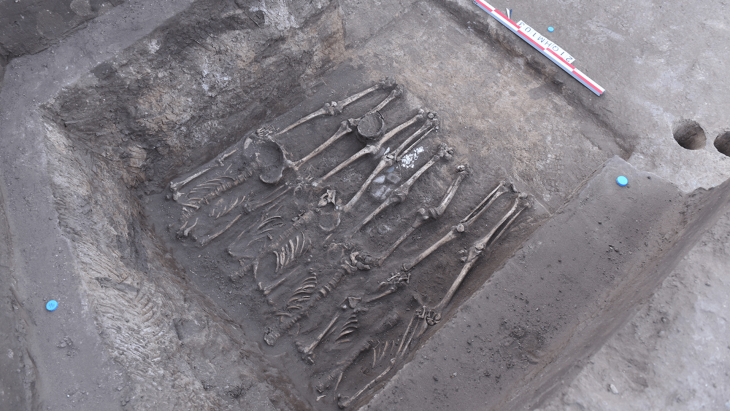The remains of an adult woman were discovered at the base of the Wolseong palace in Gyeongju, North Gyeongsang province, South Korea.
Wolseong was a royal dwelling of the Silla Kingdom (57 B.C.-A.D. 935) and stood until the kingdom collapsed.
Wolseong’s formal excavation investigation began in December 2014. Wolseong, which is also a Unesco World Heritage site, is literally translated as “moon castle” in English and covers more than 200,000 square meters. It was the seat of the Silla Dynasty and is regarded as one of Korea’s most important historical monuments.
An archaeological dig by the CHA in 2017 led to the discovery of bones of two people under the west walls of Wolseong Palace, suggesting that the Silla Kingdom practiced human sacrifice.
The discovery of the remains of two individuals from the fifth century near the west entrance of Wolseong shocked the people. The first was of a male, while the second was of a female. It was the country’s first archaeological evidence proving that human sacrifice can be a common practice among the Silla people.
![The remains of adult female were discovered just 50 centimeters (1.64 feet) above the remains found in 2017. [CULTURAL HERITAGE ADMINISTRATION]](https://arkeonews.net/wp-content/uploads/2021/09/Ekran-Resmi-2021-09-07-23.48.53-min-1024x711.png)
Remains of another female adult have been discovered, just 50 centimeters (1.64 feet) above the area where the couple was found in 2017, the Gyeongju National Institute of Cultural Heritage announced on Tuesday.
The woman, like the other two bodies, was laid to face the sky and is thought to have been in her twenties when she was sacrificed. The couple, discovered in 2017, were in their 50s.
Researchers believe the sacrificed individuals, like the two Silla people discovered in 2017, are from a lower-ranking class since they were “all quite undersized and had nutrition imbalances as seen from their teeth.”
In addition, there was a pot found near to her head. Four pieces of pottery had discovered near the victims’ feet in 2017.
When the remains two bodies were recovered, some speculated that their deaths may have been due to an accident. However, the Cultural Heritage Administration determined that the evidence — including the discovery of animal bones and artifacts used for ancestral ceremonies in the same region and the absence of indications of fighting — clearly suggests that the couple died as part of a sacrifice ceremony.
![Remains of an adult female from 1,500 years ago found in Gyeongju, North Gyeongsang, at the site of a palace complex known as Wolseong. Intact pottery was found next to the head. [CULTURAL HERITAGE ADMINISTRATION]](https://arkeonews.net/wp-content/uploads/2021/09/Remains-min.jpeg)
“Now with the additional discovery, there’s no denying Silla’s practice of human sacrifice,” said Choi Byung-Heon, professor emeritus of archaeology at Soongsil University, said that the specific location of where the remains were discovered is also important.
According to Choi, the remains of three Silla people were laid on top of the bottommost layer of the fortress’s west wall, right in front of where the west gate would have been located.
“After finishing off the foundation and moving onto the next step of building the fortress, I guess it was necessary to really harden the ground for the fortress to stand strong. In that process, I think the Silla people held sacrificial rites, giving not only animals but also humans as sacrifices,” said Choi.
Victims were buried on the floor of the palace, possibly as foundation sacrifices. Foundation sacrifice refers to the practice of burying a human in the foundation of a new building as an attempt to ensure that it stands. Building buildings is an insult to the spirit and gods of this land. In order to appease them, you must sacrifice. In turn, the sacrifices were transformed by death. They became guardians, destined to guard the building that had become their tomb.
Gyeongju National Institute of Cultural Heritage
Cover Photo: A view of the site of Wolseong, a now-destroyed royal dwelling of the Silla Kingdom (57 B.C.-A.D. 935), located in Gyeongju, North Gyeongsang Province. (Cultural Heritage Administration)

